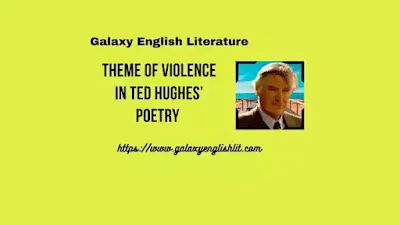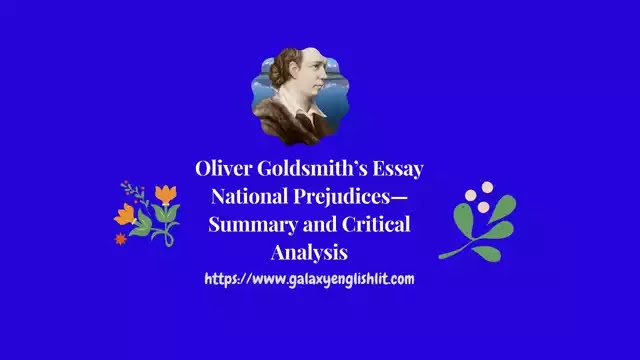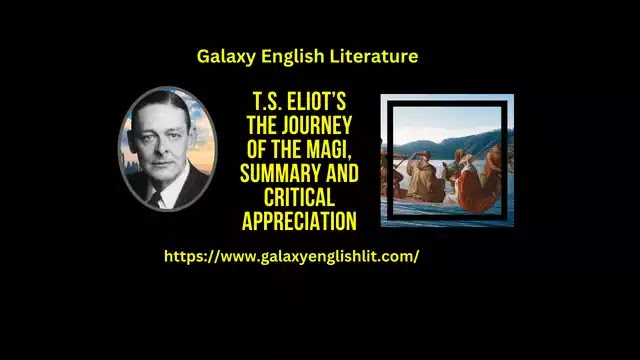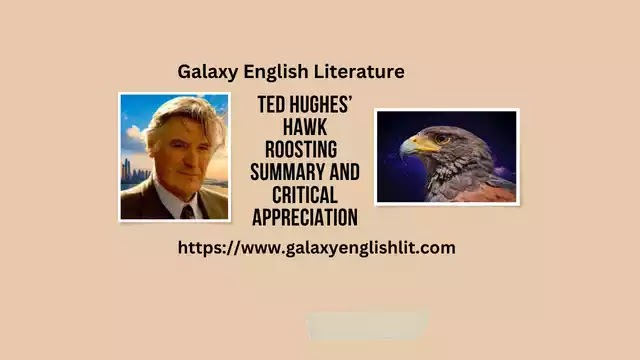Violence and Brutality as Major Theme:
Ted Hughes is highly fascinated by different kinds of violence such as violence in love as well as in hatred, violence in the jungle, violence in the war and violence in the form of murder and sudden death. But Hughes, in spite of knowing that violence is a disturbing factor and very often it proves fatal, feels it source of energy. He thinks that without violence, blood - shed, murder and sudden death there would not be any excitement in human life and human life would be a sort of monotonous.
 |
| Theme of Violence in Ted Hughes’ Poetry |
When Hughes looks at the caged jaguar, hurrying enraged though prison - darkness, he finds victory in the beast's untamed will: “His stride is wilderness of freedom.” In The Martyrdom of Bishop Farrar, Hughes goes further and finds triumph in a moment of martyrdom. The poet tries to follow the universal fact that the fire can only burn the flesh and the bones of man but his spirit remains immortal. Man's spirit never dies. Violence is an essential aspect of Hughes’ poetry. It is a pure expression of the poet. The British have always been a warlike and belligerent nation and Hughes sums to reflect this quality, especially imperialism in his poetry.
Violence Pervading in Animal Poems:
The poem Hawk Roosting treats a kind of violence. The spectacle of violence pervades this poem. Even more striking than the hawk's egoism and its sense of power, is the imagery of violence and brutality in this poem. The hawk is proud of its power to kill. All the fierceness and the brutality of the hawk have been summed up in the following lines:
“I kill where I please it is all mine.
There is no sophistry in my body:
My manner are tearing off heads
The allotment of death.”
The hawk's whole concern is to distribute death and it never wavers in carrying out this task because it knows only one path, and that is the path leading it directly through the bones of the living creatures.
In the poem Pike, killing instinct in animal receives fullest attention. In the poem, Hughes has depicted the pike - fish with it fierce and destructive nature. The pike - fish are “killers from the egg”, meaning that they have the destructive instinct in them from the very time the mother - fish lays its eggs. The pike - fish are so destructive in their nature that they even kill oné another to satisfy their hunger. In fact they spare none.
In the poem The Jaguar, the poet depicts the Jaguar's power, its energy and its visionary, nature. In contrast to the other animals, the jaguar distinguishes itself by its energy, ferocity and physical power. The jaguar in the cage seems to be enraged but not because it is caged but largely because it recognises that Nature has set it on this terrible treadmill, turning the world beneath its stride. Its eyes that have power to mesmerize and hypnotise the on - lookers are satisfied to be blind in the fire of their own blaze and energy. It is so self - centered that its ears are deafened by the strong noise of its own heart beats. It spins at the bars of the cage. Really its energy cannot be bounded by any cage. Just as prison cell cannot keep the mind of a visionary behind the bars, so can the bars of a cage not suppress the energy that is within the jaguar.
In the poem Thrushes, a thrush, too, is a predatory creature. The thrushes sit on the lawn. They look like a steel coil. They have deadly eyes but delicate legs. The poet wonders at the secret of their single - minded devotion to attack their prey which is necessary for their survival. They attack their prey as soon as they find it easy to attack. They do so in an instant as if they move automatically on seeing a prey. They make no special claim except for their straightforward and intellect and emotion free predatoriness.
In Esther's Tomcat, a tomcat sprang at a knight on his horseback and killed him though he fought hard against its clawing and bite. After hundreds of years the stains of the knight's blood may still be seen on the stone where the knight fell. And the tomcat continued its blood - thirsty career.
Violence in Wars:
The poem entitled Six Young Men is one of the most gripping and agonising war poems. The theme of this poem is death and war. The tragic death of six young men in the prime of their lives receives full attention. They were all killed in the course of the war. Their deaths are premature, so we are deeply touched by the poem. One of these six men was shot and wounded in the course of an attack by the enemy. In this wounded state he called out to one of his comrades for help. This comrade, who was his best friend, went to his help, but he too was shot. Then both of them died. The four were also killed, though nobody knows how and when. Ted Hughes’ main idea in the poem is how death overtakes people in the war and puts an end to the life and activity they showed while they were alive.
Out is a sort of autobiographical poem of Ted Hughes dealing with the actual experience that his father had of war during the First World War. Hughes takes war as a sign of human degeneration and destructiveness. He reasons that the shock of machine guns, armies of millions create a terror and demoralise human beings. In first section, there is a horrible picture of a man recovering in a chair from the ravages of war. Yet the psychological wounds remain unhealed and unforgettable. There is nothing glorious in the war. In the third section, the ‘Remembrance Day’ is an ironical title and it is a serious meditation on and rethinking about the futility of war.
Hughes’ Violent Imagery:
The poem Hawk Roosting is about the egotism of a single - minded concern with a violence which seeks no justification for itself. It is the fierceness and cruelty of the hawk which are emphasised. The hawk can kill where it pleases because the whole world is its domain. To tear off heads is a routine performance by it. It is a arbiter of life and death. The one path of its flight lies directly through the bones of the living. The poet has described the killer - hawk in metaphorical style. The poem Thrushes begins with a picture of the terrifying thrushes on the lawn. The poet, first, uses powerful images to project the predatory skill of the bird. He uses the images of “terrifying coiled - steel with deadly eyes and delicate legs.” He takes a note of the birds’ darting motions to peck at worms and insects. In the poem Pike the examples of phrases and lines which bring vivid pictures to our minds, and which also startle us by their originality are Green the gold, “killers from the egg”, “the malevolent aged grin”, “stunned by their own grandeur”, “submarine delicacy and horror”, “the jaws hooked clamp and fangs.”
Dream or Feeling of Violence:
In the poem Pike, the speaker tells us one of his experiences of fishing. He had been trying to catch fish from a pond which, according to the stories current about it, was “as deep as England”. The pike - fish in it were reported to be so huge that they could not move at all. The speaker did not have the courage even to try to catch fish of that size. However, he did throw his fishing - line in the pond to try to catch one of them, though he was in a state of great fear at that time. In fact, he found himself so overwhelmed by fear that a darkness arose from nowhere and began to come towards him.





